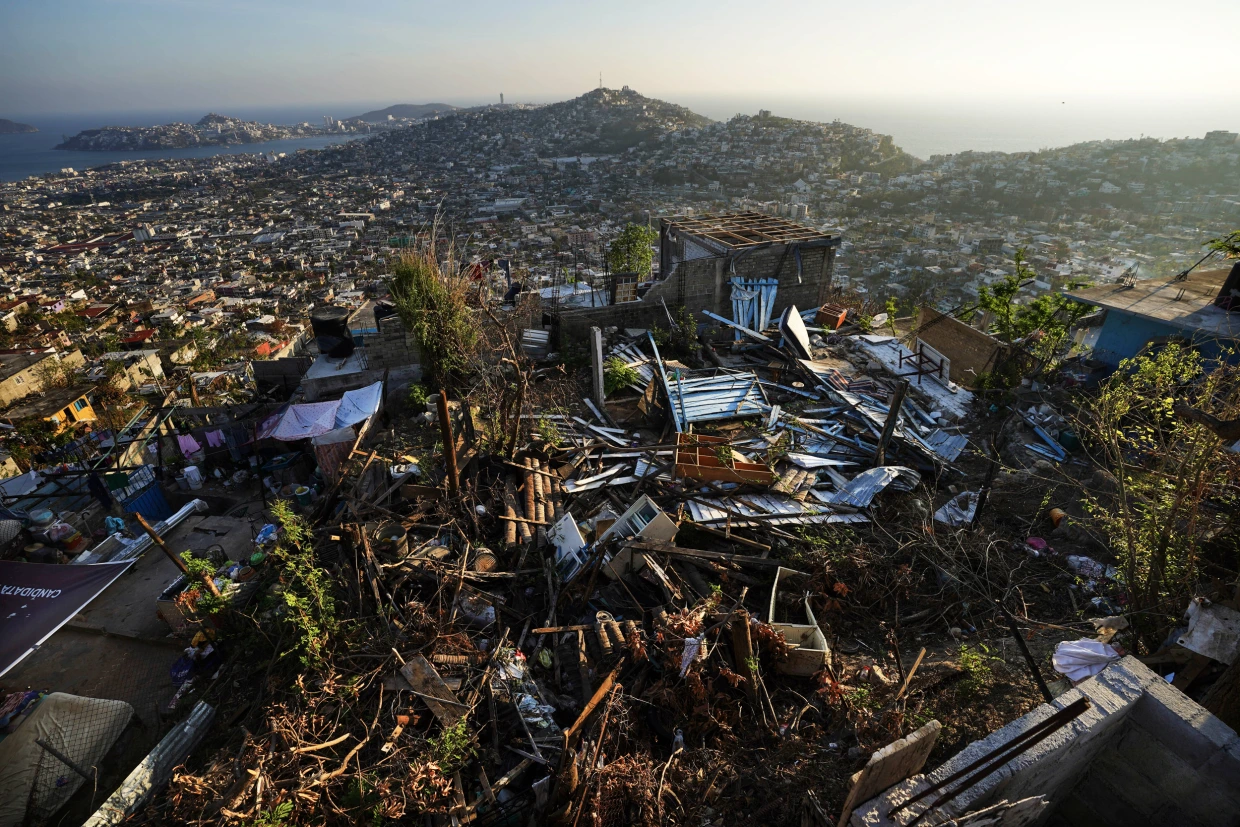This 1-million-person city of large hotels, destitute suburbs, tourism, and drug violence is recovering unequally.

A guy walks through his damaged home on Thursday, the day after Hurricane Otis made landfall in the coastal resort of Acapulco, which is located in Mexico. (Source: EPA-EFE and Shutterstock)
Individuals Recovering from the Hurricane Otis
A 58-year-old cook put Gucci and Dior shoes into a bag to carry to her employer on a recent day at a fancy condominium with Pacific views. One apartment skeleton and piles of rubble, walls, and windows stripped by Hurricane Otis remained around her. Still, Rufina Ruiz was hopeful. Her suburban home near Acapulco’s entrance flooded, but other homes were “buried.” She still works, even though she was away when the government census of hurricane victims was taken, which would have led to relief. “I’d rather work,” she said. More than two weeks after Otis raced from tropical storm to Category 5 hurricane in a record 12 hours, shocking authorities and people, this city of 1 million, a mix of opulent hotels and impoverished suburbs, tourism and drug crime, is striving to recover unequally.
Cars may again drive past rubble and downed palm trees on city streets. City signs read “free food.” Water, food, and pharmacy lineups are everywhere. Wealthy Acapulco residents who evacuated before or after Otis returned to assess their seaside houses. A young man removed tables and chairs from a modest restaurant on Acapulco’s coastal boulevard that formerly surrounded a yacht-filled bay. Workers nailed boards over smashed business windows nearby. Soldiers and National Guard personnel outnumber palm, palms in downtown streets.
READ ALSO: 27 Recorded Deaths as Hurricane Otis Hit Acapulco Mexico
Some residents say officials didn’t give them more warning. Even those who heard Otis was a Category 5 hurricane didn’t grasp it. Acapulco’s poorest hillside neighborhood’s Mariel Campos worked at a motel. She was offered to keep her job clearing up debris instead of making beds, but she declined because it would have cost more than half of her $16 a day for increasing transportation costs to and from her damaged home. At least 48 individuals died and scores more are missing from Hurricane Otis. Notwithstanding its decline in recent decades because of organized crime, Otis ruined 80% of hotel infrastructure and 96% of businesses in a city that relies on tourism.
The federal government unveiled a $3.4 billion restoration plan last month to help families, small businesses, and hotels, and basic services have been almost fully restored. The emergency ended Thursday under President Andrés Manuel López Obrador. “It’s outrageous that they think living in these conditions is not an emergency,” said 44-year-old psychologist Ana Mextlitzin Méndez, whose neighborhood beyond the tourist route has no power. City residents have piled branches and cleared roadways, but they haven’t removed all the debris. Some streets are blocked, while others burn. Many damaged hospitals are packed, and Doctors Without Borders has warned of dengue. Dust and bugs fill the muggy air.
READ ALSO: Hotel Guest Slept on the Lavatory Due to Heavy Rainfall Bought by Hurricane Otis

















































